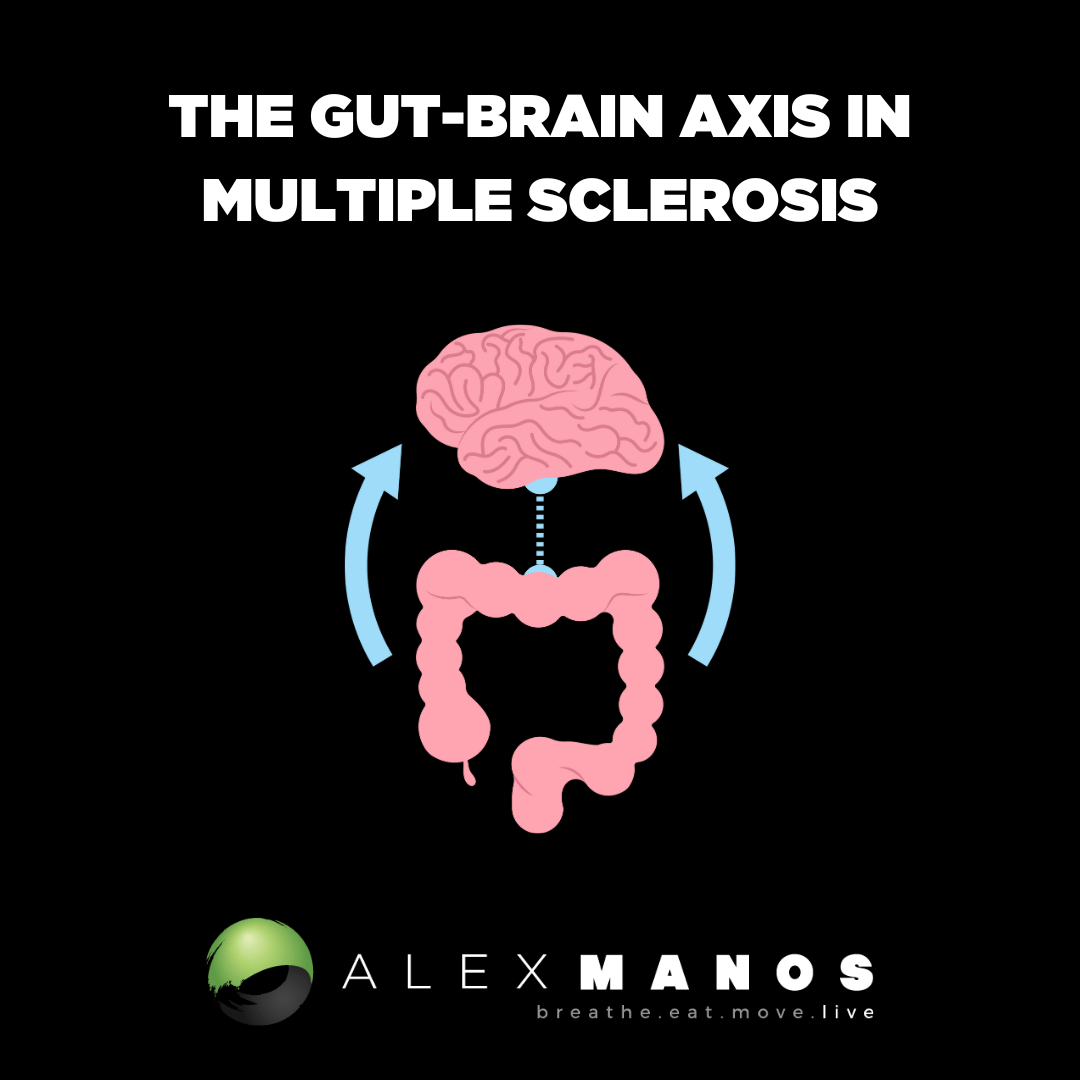Welcome to my blog on The Gut-Brain Axis In Multiple Sclerosis.
Before we start, other blogs that you might be interested in, include:
- The gut microbiome in Multiple Sclerosis
- Leaky Gut In Multiple Sclerosis
- What Is The Gut-Brain Axis?
- Can gut health effect mental health?
In my blog entitled The Gut Microbiome In Multiple Sclerosis we discussed how there are many ways that the microbiome may contribute to Multiple Sclerosis:
- The Gut-Brain Axis
- Microbial metabolites
- Modulation of the immune system
- Maintaining a healthy gut barrier (preventing leaky gut)
Today we focus in on the first point.
Introducing The Gut-Brain Axis In Multiple Sclerosis
The brain-gut axis serves as the bidirectional connection between the gut microbiome, the intestinal barrier and the immune system that might be relevant for the pathophysiology of inflammatory demyelinating diseases such as multiple sclerosis.
People with multiple sclerosis have been shown to have an altered microbiome, increased intestinal permeability and changes in bile acid metabolism.
Experimental evidence suggests that these changes can lead to profound alterations of peripheral and central nervous system immune regulation.
One of the reasons researchers are being excited is because, besides being of pathophysiological interest, the brain-gut axis could also open new avenues of therapeutic targets.
[/vc_column_text]Studies so far have not properly accounted for these symptoms or other relevant variables such as diet. An ongoing International MS Microbiome study aims to define a “core microbiome”. It might shine some light into this complicated field. (1)
How Can You Heal The Gut-Brain Axis?
Options discussed in the research (1) include:
- Modification of the microbiome.
- The use of probiotics.
- Fecal microbiota transplantation.
- Supplementation with bile acids.
- Supplementation with intestinal barrier enhancers.
Probiotics And Multiple Sclerosis
Although probiotics may not be the ideal method to modify the microbiome, they have been suggested to play a significant role in modulating barrier function. E. coli strain nissle has been marketed in Europe for many years as a probiotic with beneficial effects on the intestinal barrier.
It has moderate evidence from randomised trials showing it may lead to remission in ulcerative colitis and in the EAE mouse model of MS it reduced disease severity by maintaining intestinal barrier function.
VSL#3 is another probiotic mixture with barrier-protecting properties. There is evidence of clinical effectiveness in the management of chronic pouchitis in patients with ulcerative colitis.
VSL#3 administered to a small number of MS patients leads to an anti-inflammatory peripheral immune response (1).
These two probiotic agents would be good candidates for a large, well-designed clinical trial (1).
Conclusions: The Gut-Brain Axis In Multiple Sclerosis
Exciting research suggests that the brain-gut axis, once an almost esoteric concept, might yield novel therapeutic targets in neuroimmunological diseases such as MS (1).
The often-symbiotic roles of the gut microbiome, intestinal barrier and even bile acids in the regulation of neuroimmune responses is beginning to be elucidated (1).
If future pre-clinical and clinical studies confirm the relevance of intestinal barrier dysfunction, bile acid metabolism and the gut microbiome in the pathophysiology of MS, the next step will be to translate these findings into therapeutics.
Only well designed clinical trials will answer whether interventions such as FMT, probiotics or barrier protectors yield clinically meaningful results.
The time is right to assess whether the gut-brain axis can be transferred from the bench to the bedside (1).
References
- Focus on the gut-brain axis: Multiple sclerosis, the intestinal barrier and the microbiome (click here)
- Prevalence of Small Intestinal Bacterial Overgrowth in Multiple Sclerosis: a Case-Control Study from China (click here)
- Prevalence and associated factors of small intestinal bacterial overgrowth among systemic sclerosis patients (click here)
- The intestinal barrier in multiple sclerosis: implications for pathophysiology and therapeutics (click here)
- The Gut-Brain Axis in Multiple Sclerosis. Is Its Dysfunction a Pathological Trigger or a Consequence of the Disease? (click here)
- Increased intestinal permeability in primary Sjögren’s syndrome and multiple sclerosis (click here)
- Undigested Food and Gut Microbiota May Cooperate in the Pathogenesis of Neuroinflammatory Diseases: A Matter of Barriers and a Proposal on the Origin of Organ Specificity (click here)
- Microbiome in Multiple Sclerosis: Where Are We, What We Know and Do Not Know (click here)
- The Gut Microbiome and Multiple Sclerosis (click here)
- Multiple sclerosis, the microbiome, TLR2, and the hygiene hypothesis (click here)
- Gut microbiome in multiple sclerosis: The players involved and the roles they play (click here)
- The gut microbiome in neurological disorders (click here)
- Gut microbiome and multiple sclerosis: New insights and perspective (click here)
- Alterations of the human gut microbiome in multiple sclerosis (click here)
- A probiotic modulates the microbiome and immunity in multiple sclerosis (click here)
- Multiple sclerosis and faecal microbiome transplantation: are you going to eat that? (click here)
- The Gut-CNS Axis in Multiple Sclerosis (click here)
- The intestinal barrier in multiple sclerosis: implications for pathophysiology and therapeutics (click here)
- Focus on the gut-brain axis: Multiple sclerosis, the intestinal barrier and the microbiome (click here)
- Diet, Gut Microbiota, and Vitamins D + A in Multiple Sclerosis (click here)
- The “Gut Feeling”: Breaking Down the Role of Gut Microbiome in Multiple Sclerosis (click here)
Alex is a certified Functional Medicine Practitioner (IFMCP) and has a MSc in Personalised Nutrition. He is also a breathwork facilitator with a background in personal training and massage therapy. He also runs The Resiliency Program - a 24 week program aimed at building physical, mental, emotional, and spiritual resilience.





